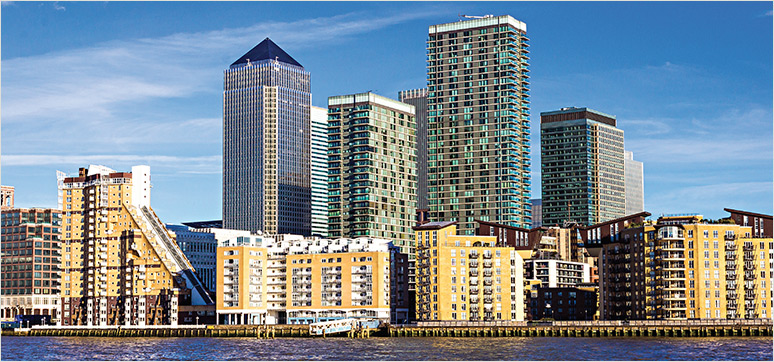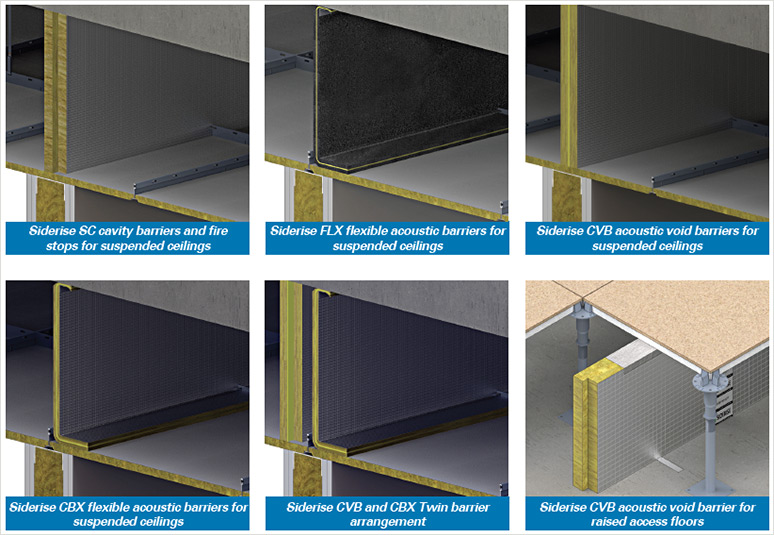Productivity, well-being and happy employees are all key considerations in the ideal office environment. With noise being high on the list of annoyances in the workplace and a cause of work-related stress, how can designers and specifiers create a quieter office space, improve privacy and deliver exceptional floor-to-floor, room-to-room sound reductions?
Office space has changed quite dramatically over the years, with informal, open-plan and flexible spaces replacing the more formal enclosed and private rooms of the past. This flexible working ends up having a knock-on effect – increasing the level of occupation, and upping noise levels, which in turn hinders productivity.

Acoustics, like lighting, should be an integral part of good architectural design and when it is done well, is a significant contributor to the well-being and productivity of the office employee. From the outset, it’s important to use materials that will achieve good acoustics and solve any sound transmission issues. The designer must also not only satisfy the legislative requirements but the client or end user’s ‘wish list’ of acoustic behaviour. Proper acoustics and the unobtrusive sum of all sounds, is the key objective for a comfortable environment.
Cross-talk
The sound separation achieved between adjoining rooms or offices is often severely limited by ‘crosstalk’ via a common void. This common problem occurs when the transmission loss associated with this sound path is less than that provided by the primary separating element, for example, a partition. Voids affected by ‘cross-talk’ include:
- Suspended ceiling voids at partitions
- Access floor voids below partitions
- Cavities at floor slab edges to façades.

To effectively reduce sound transmission or ‘crosstalk’ via hidden voids which sit above office partitions, ceiling void barriers should be installed directly inline with the partition.
The Sound Reduction Index or SRI (Rw) of the cavity barrier is not normally required to equal that of the partition itself. This is due to the presence of other obstructions in the room-to-room sound path such as the suspended ceiling. The individual performance of the barrier needs to be sufficient to correct the shortfall between the partition and the untreated cross-talk path.

Suspended Ceiling Systems
The actual value of these paths can vary substantially. For ceiling voids, 15-40dB Dnf,w (DnCw) would usually be associated with most suspended ceiling systems. An acoustic engineer can assess a minimum SRI value for the cavity barrier with the knowledge of either the existing overall path value or details of the individual path obstructing elements.
Occasionally, conditions demand for substantially higher SRI values of the cavity barrier, such as ceiling voids formed by open-cell or substantially perforated suspended ceilings. Twin barrier or multiple element arrangements can then be employed to accommodate almost all possible sound performance criteria. In this situation, Rw values are for the barrier arrangement alone. Roomto- room performance (DnCw) would normally be significantly higher.
Curtains to Noise
When you combine the evolving and changing nature of the workplace with modern lightweight construction, such as curtain walls, this can also present a number of challenges when it comes to acoustics.
The overall sound performance in a curtain wall building is effectively controlled by the ‘weakest link’. This means that very careful consideration should be given to any potential weak point to ensure it does not become the ‘limiting factor’ in the overall sound transmission performance. The curtain wall, together with the movement joint, should all be considered as potential weak points and thoroughly assessed accordingly.
Making It Sound Tight
Involved in projects throughout the world and having manufactured acoustic and fire insulation products for more than 40 years, Side rise offers a large range of tried and tested product enhancements specifically developed for both building interiors and the façade industry. From flexible and semi rigid acoustic barriers for suspended ceilings to acoustic void closures for top of walls and fire stops for profiled decks, the ceiling void barrier range is designed to effectively reduce sound transmission via hidden voids.
Designed to reduce vertical and horizontal sound transmission in curtain wall buildings, this comprehensive range includes a choice of effective and proven acoustic void barriers and barrier overlays for facades that deal with all common sound path problems and are frequently used to assist in reducing flanking transmission between adjacent internal areas.

Acoustic comfort in the built environment has become a concern to society and a challenge for the designers. It is all too common when considering the specification of the seal between the slab edge and the facade, for product selection to be based exclusively in terms of compliance to the relevant fire regulations. For façade engineers, architects and their clients, it is essential that due consideration is given to both the acoustic implications and performance of the closure arrangement, ensuring any potential weak point in curtain walled buildings is controlled.
The cavity seal should ideally always be selected at the design stage because at this point, the largest range of suitable products is potentially available to the designer. Products can therefore be selected based on cost-effectiveness, ease of installation, and acoustic performance. Post or remedial treatment severely limits available product selection. Also, it is invariably more expensive, less practical to install and may not always be fully compliant.
Often the acoustic design of offices does not receive the attention that most other architectural systems would. A superior acoustic environment should be a given. The use of performance enhancing products will mitigate against these issues and ensure any potential noise issues within offices are eliminated.














